A popular drink in Japan, divine Royal Milk Tea is easy to make at home with Assam or Darjeeling black tea leaves and milk. You can add sugar or honey to suit your taste. It‘s a delicious beverage to serve hot or iced, or you can use it as a base for boba milk tea!
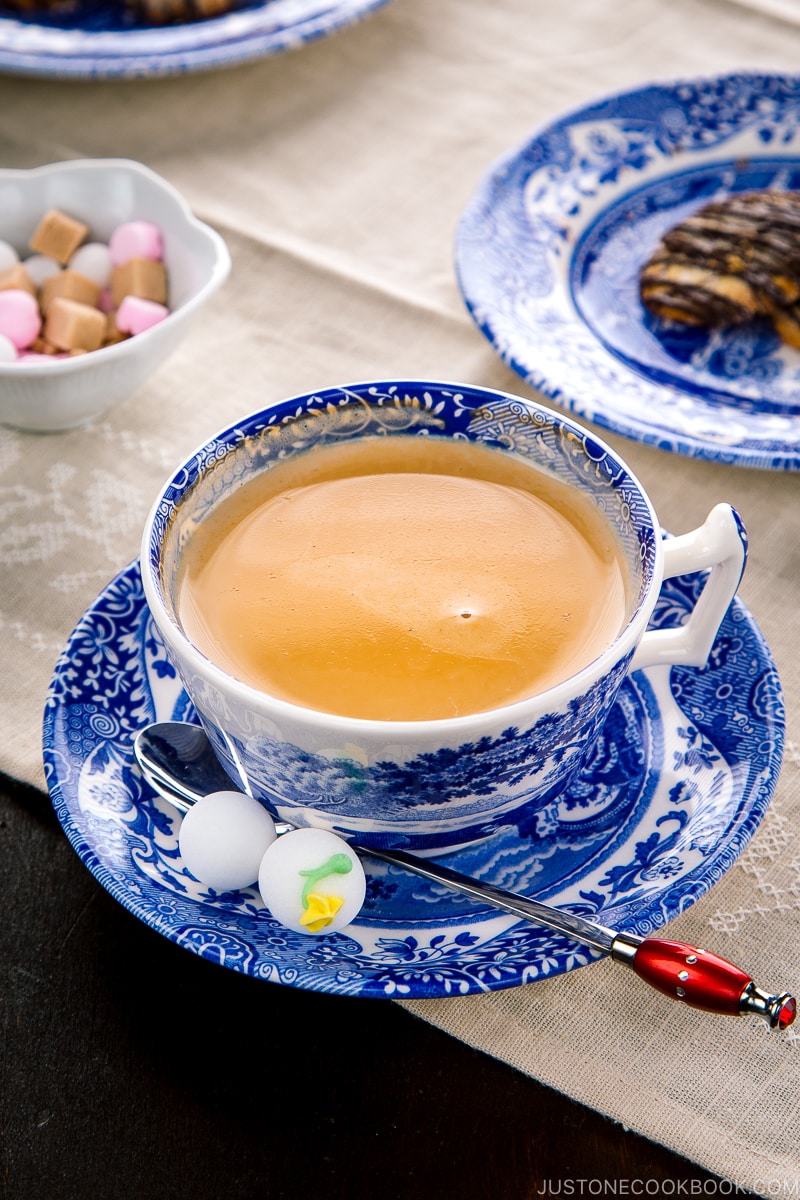
Royal Milk Tea (ロイヤルミルクティー) is a popular Japanese drink that can be found hot or cold anywhere, whether at the Japanese market, convenience store, or vending machine. Made with Assam or Darjeeling tea leaves and milk, Royal milk tea is delicious to sip on, and makes a perfect drink to serve when you have friends over for tea time.
My son and I are both royal milk tea enthusiasts. We always order the tea from cafe menus or purchase bottles from vending machines in Japan. From time to time, when we find ourselves craving a cup of milky goodness, I’d make the tea at home.
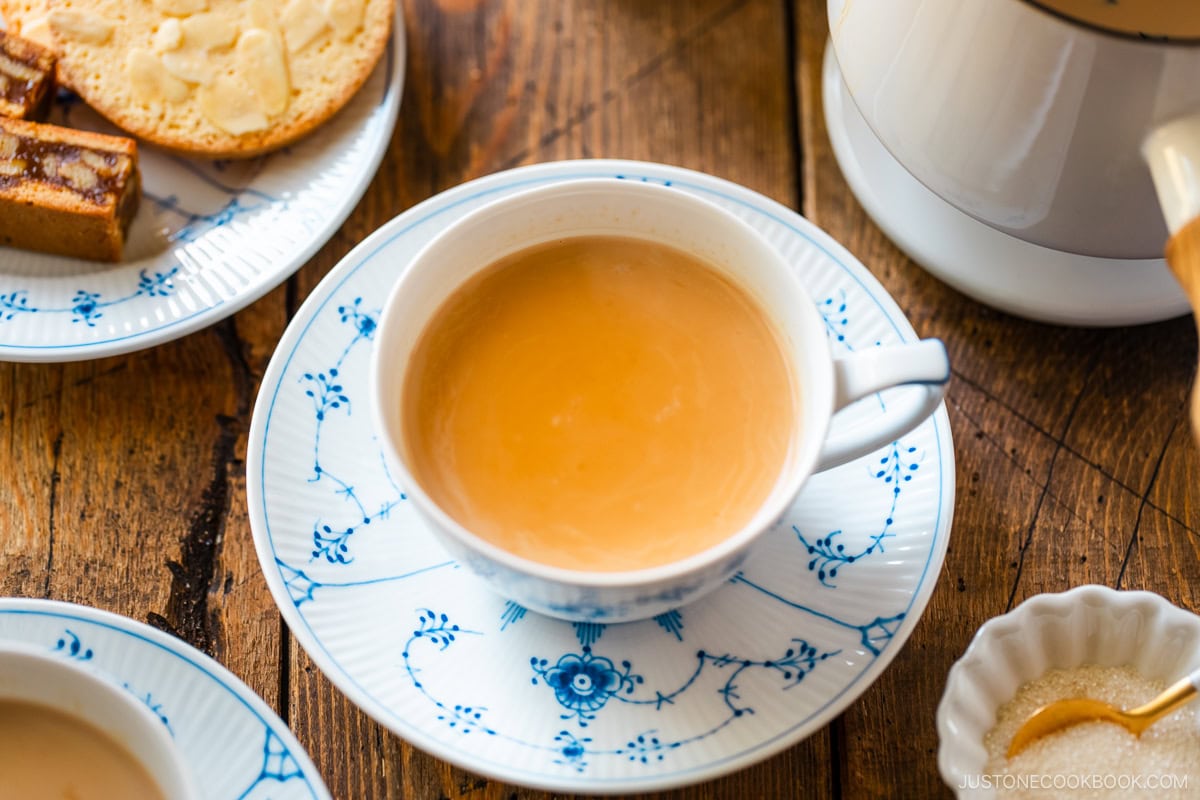

What is Royal Milk Tea?
Royal milk tea (ロイヤルミルクティー) was invented by the tea company Lipton in 1965 and quickly took Japan by storm. It captured the hearts of tea enthusiasts and casual consumers alike because of its higher milk ratio compared to other teas. The rich creaminess of the milk weakens the bitter taste of strong tea, thus creating a delicious balance. Now it is a commonplace beverage throughout Japan.
I always get royal Milk tea from Japanese vending machines. My favorite brand is Kocha Kaden (紅茶花伝) and Gogo no Kocha (午後の紅茶). Have you tried them before?
Royal milk tea is also noted for its cooking method because of its similarity to masala chai. Tea leaves are simmered in milk rather than steeped in hot water. This technique produces a richer and creamier brew that distinguishes these two drinks from other traditional teas. The only difference that royal milk tea has from the latter is that it does not include any spices such as cardamom, ginger, and cinnamon that chai might include.
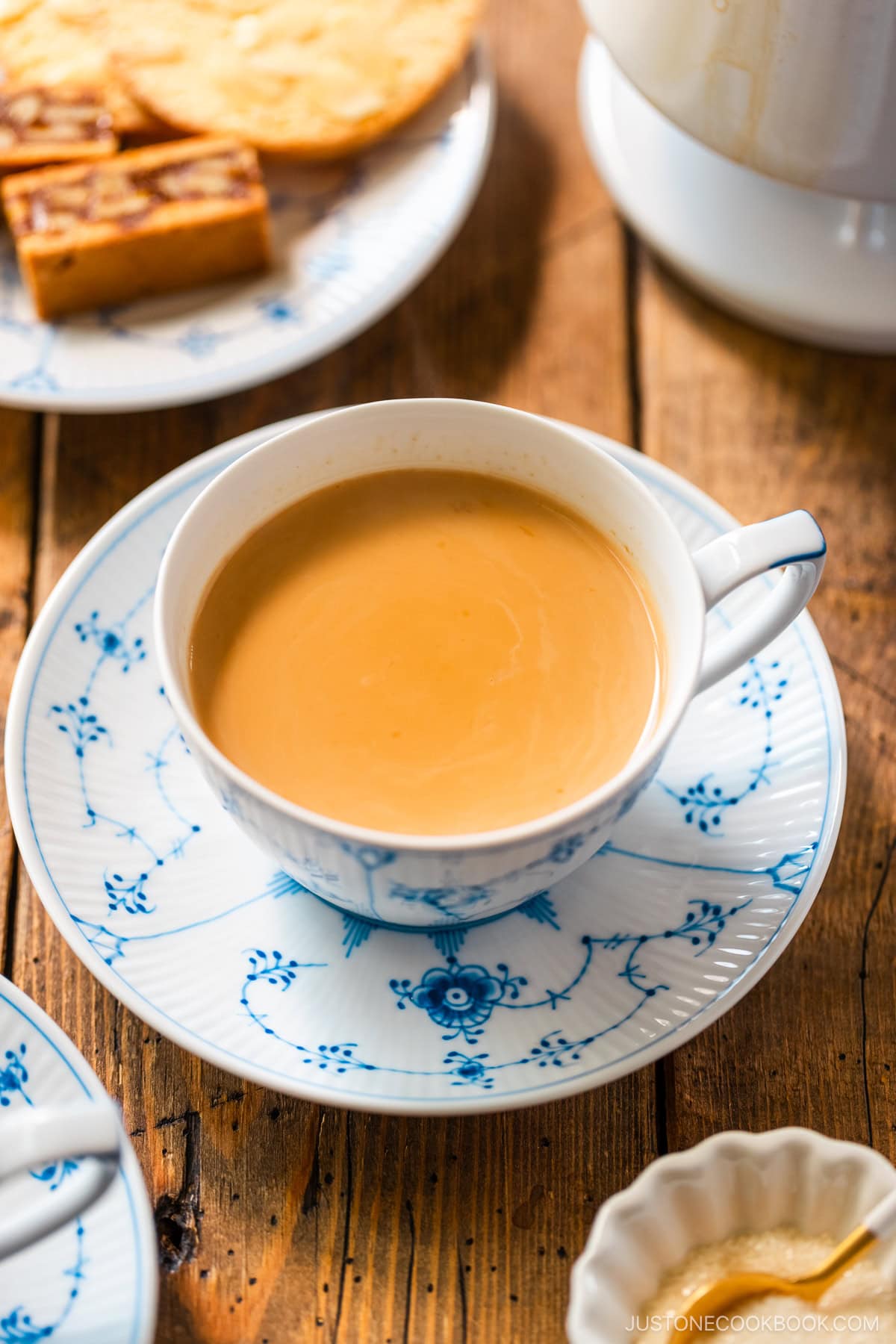

Ingredients You’ll Need for Royal Milk Tea
- Water
- Black tea leaves
- Milk – If you don’t take dairy, you can substitute regular milk with oat milk or soymilk; however, the taste might vary. I don’t recommend almond or coconut milk as they overwhelm the flavor.
- Sugar – I used organic cane sugar, but brown or coconut sugar would work. You can use other sweeteners such as agave, honey, maple, and simple syrup.
How to Make Japanese Royal Milk Tea
- Bring water to a boil.
- Add tea leaves, reduce heat, and cook for 90 seconds to 2 minutes.
- Add milk and slowly bring to a simmer.
- When the tea is about to boil, remove it from the heat.
- Strain it with a tea or fine mesh strainer and pour it into your serving cup.
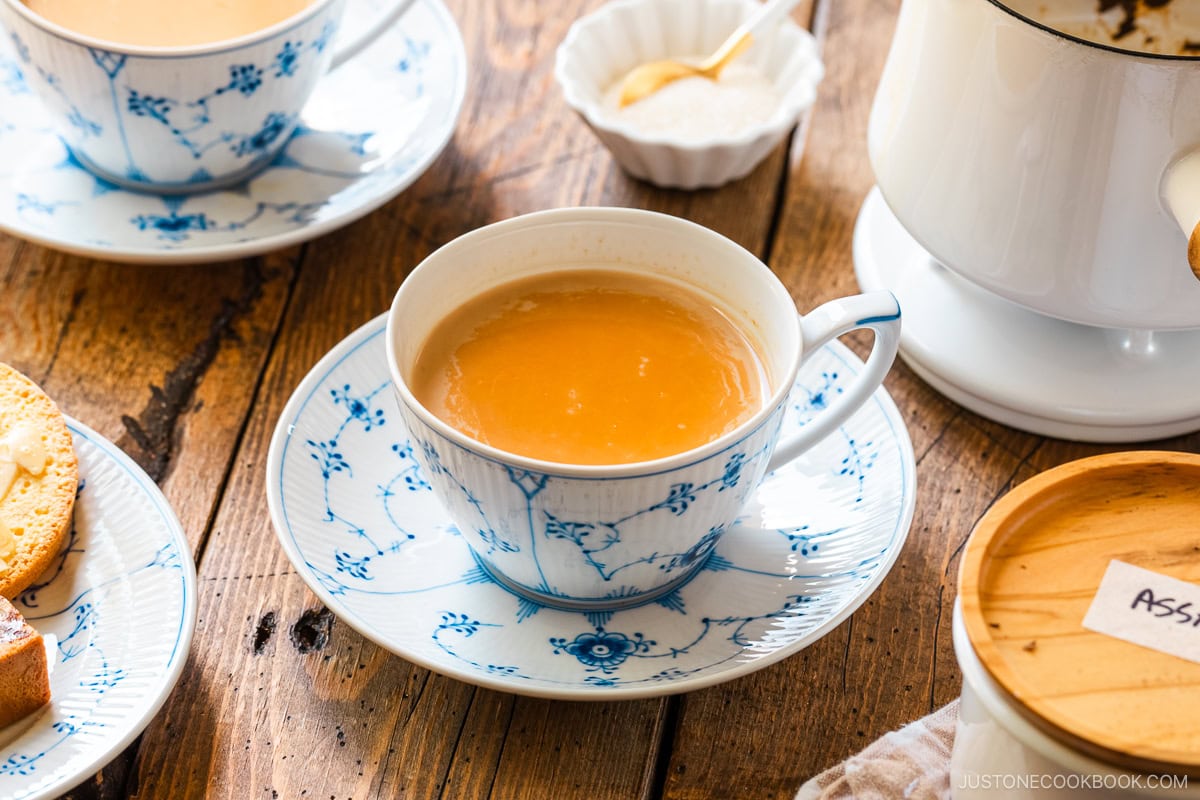

The Best Tea to Use
I recommend using a robust black tea with a strong flavor as the base for your milk tea. I like to use Assam tea as its full body and malty, spicy character come out beautifully after adding milk and sugar. It also yields a rich color for the tea. Another delicious option is the hearty Ceylon tea.
If you have English breakfast or Irish breakfast at home, you can use them too. They typically consist of a blend of Assam, Ceylon, and Tanzanian black tea.
For lighter-color tea, you can use Darjeeling tea. For a non-caffeinated version, you can use rooibos tea.
I do not recommend non-black teas, such as jasmine or green tea for milk tea.
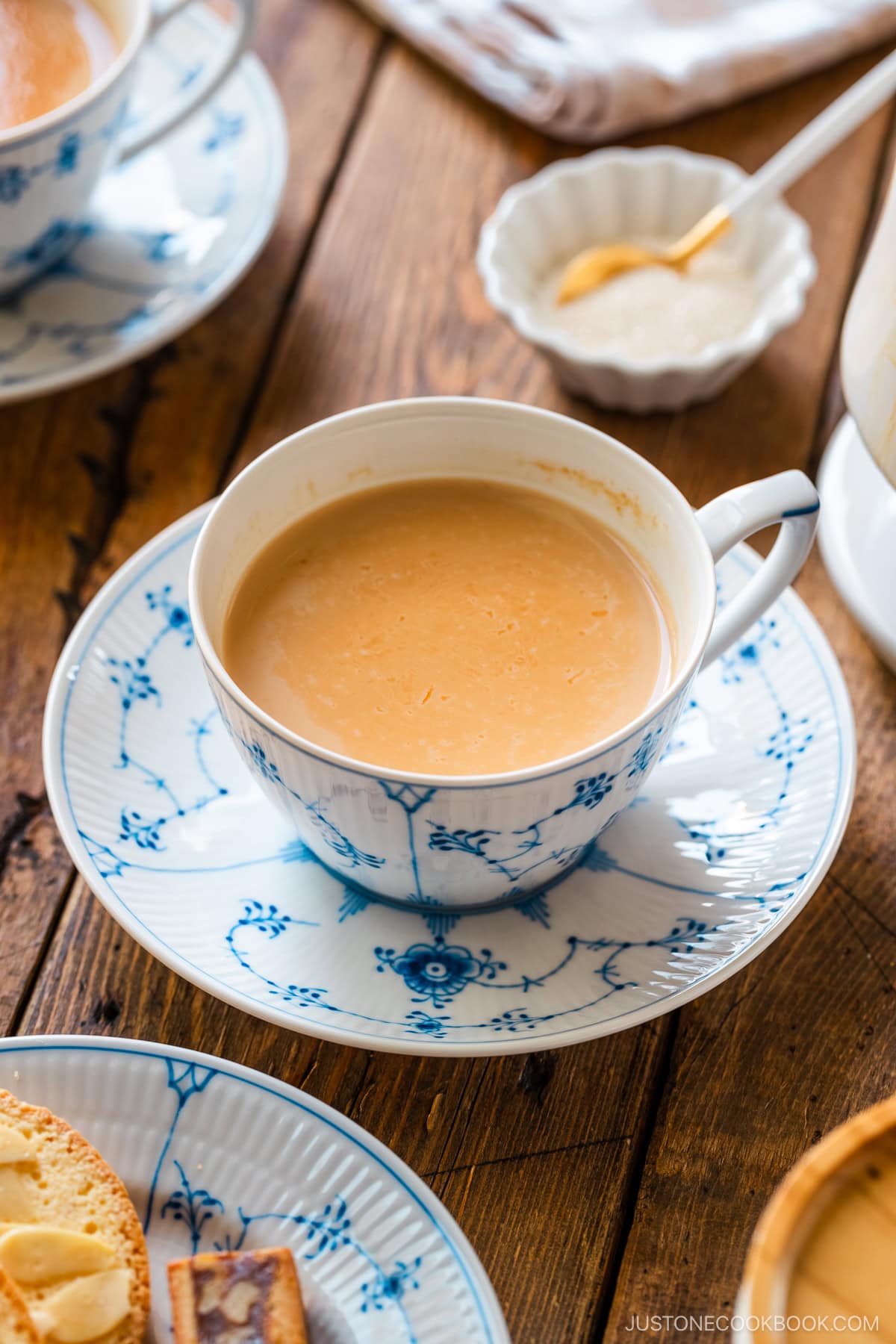

Recipe Tips and Techniques
- Use a pre-warmed cup to maintain the temperature of the tea.
- Use the teacup you’re using for serving to measure water and milk. This will save you from washing a measuring cup.
- Don’t overcook the tea leaves, as the tea gets bitter.
- Don’t leave the stove once you add the milk. Milk may boil over when you look away.
- When making iced royal milk tea, cook the tea leaves slightly longer so the ice cubes will not dilute the flavor as much.
Turn Your Milk Tea into Boba Tea
If you are a fan of boba milk tea, add tapioca pearls (also known as tapioca balls or boba pearls) to the freshly brewed royal milk tea. It will taste just like your favorite bubble tea!
Storage Tips
You may end up with some leftovers if you make a big batch.
- To store: Keep in the fridge for a day for the best freshness.
- To reheat: Microwave or use a saucepan.
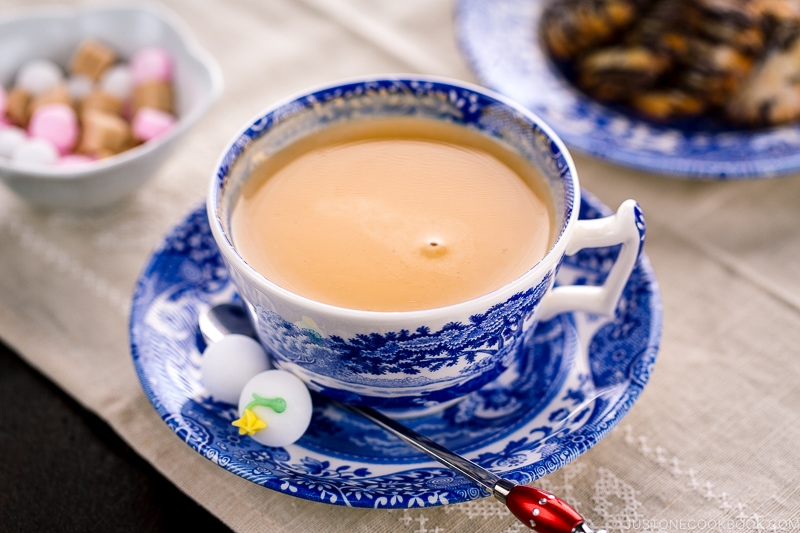

Wish to learn more about Japanese cooking? Sign up for our free newsletter to receive cooking tips & recipe updates! And stay in touch with me on Facebook, Pinterest, YouTube, and Instagram.
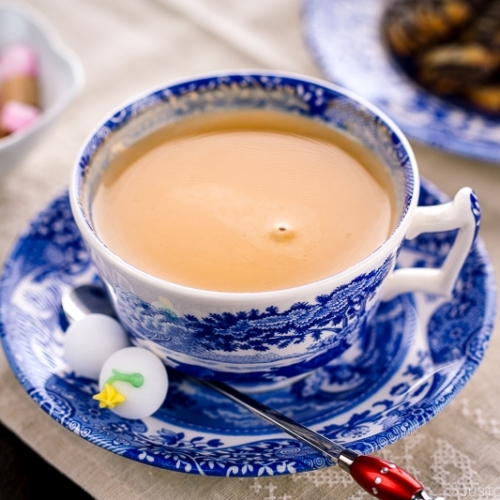

Royal Milk Tea
A popular drink in Japan, divine Royal Milk Tea is easy to make at home with Assam or Darjeeling black tea leaves and milk. You can add sugar or honey to suit your taste. It‘s a delicious beverage to serve hot or iced, or you can use it as a base for boba milk tea!
Servings: 2 teacups (200 ml per cup)
Ingredients
Prevent your screen from going dark
Nutrition
Nutrition Facts
Royal Milk Tea
Amount per Serving
% Daily Value*
* Percent Daily Values are based on a 2000 calorie diet.
Editor’s Note: This post was originally published on March 26, 2014. It was republished with new step-by-step and final images on May 15, 2024.

